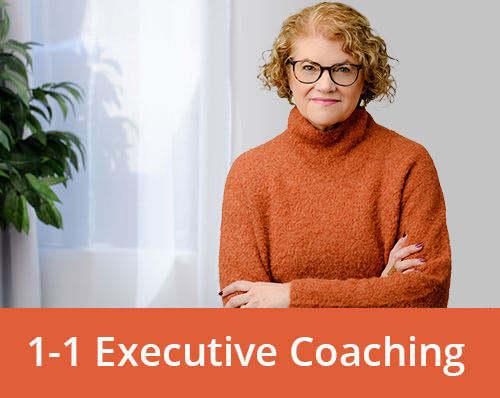July 2021 update: Rereading this with the Delta variant running around and vaccination rates slow around the world, I’m amazed at our optimism almost a year ago. That said, the advice is still solid. – Dana
I had a terrific client call today about “the new normal” and how we both hope it’s NEW. It started when my client laughed while telling me that all the media popping up recently about turning the economy back on was giving her anxiety and stress. It turns out that five weeks in, she’s kind of getting used to working at home 100% of the time. She’s trained the kids when not to bug her and is spending more time with them than ever before. So she finds the idea of going back to “normal” literally terrifying!
While I’ve already waxed philosophical about what the future holds in the new normal, I enjoyed this client call because, while there are certainly stresses and strains in adjusting to working at home, many of my clients are discovering what I’ve enjoyed about working at home for almost two decades. Whether it’s the 10-yard commute, the ability to truly walk away from work to clear your head or simply the ability to spend more unstructured time with yourself and your family…. There are many benefits that come from a closer blend to work and life. And whether you’re finding yourself, like my client, enjoying the current normal, or missing the old one terribly, I encourage you to be thoughtful and intentional about how to ease elements of normal back into your life.
Even if “the new normal” will eventually rebalance itself once again between home and work in the months ahead, and even IF it could go back to being exactly as it was before (which it can’t and won’t), this long break is giving you a rare gift of choice.
A choice is a terrible thing to waste. <=click to tweet
First: Notice the Abnormal
How often did you used to stare out the window in the office and wonder how those lucky people walking outside escaped in the middle of the day to walk and drive around outside while you sat, stuck, inside at your desk? Did you used to sit in the car actively hating your commute?
Whatever your pre-COVID routine looked like, there were things about it you didn’t enjoy. But life gets into a groove. Change is hard. Changing a routine, especially one that involves the complexities of negotiating time allocations with people at home and at work, is so hard that we usually don’t do it except in big times of change: getting a new job, moving to a new place, getting married, having children, retiring, dealing with major illnesses, etc. For better or worse, those major life events rarely come around as often as we’d like to tweak our schedules.
So here we are. COVID-19 has delivered us all a major life-changing event that, uniquely, landed almost everyone, from the most senior to the most junior, in the same boat. The exceptions are those on the front lines in health care, first responders, grocery and commercial transportation, who are now relying on their extended family and friends for even more support than usual. And then of course there’s the anxiety of the virus itself and the uncertainty of the economy. The point is, this is an unusual time. Everyone on the planet is getting shaken up.
So let yourself get shaken up. Notice that you’re settling down into your Abnormal Life in a new way. Notice where you’re landing and how it feels. Notice what you do and don’t like about it.
When you change, change on purpose. <=click to tweet
Second: Create Your New Normal – With Intention
Noticing your Abnormal Life is the beginning of choosing how to evolve into some kind of new normal. Regardless of your own assumptions about what normal will look like, it’s not too early to begin the process of choosing your next normal with intention. Here is an exercise I gave my client (and am doing myself) to become extremely intentional about my future normal. And yes, even if you’ve lost your job this exercise will help you imagine how your next one can be more supportive of you and your life than the last one. Get out a journal or pile of recycling paper and spend a little time with these questions.
Consider Your Abnormal Life
- What do you love (i.e., habits and practices) about the current situation
- how does it support you and others? (e.g., spending more time walking outside and listening to audiobooks)
- What DID you love about the old situation
- how did it support you and others?
- What is left over that you don’t and didn’t love?
- Put this list in two categories (1) neutral/positive and (2) negative)
- List out your assumptions about the “new normal”
- E.g., We can only have six 6 people at a time in the office;, when I go to work I will need to go through new cleansing routine when returning home
Start Building Your New Normal Life Intentions
- Make a single list of all the “I love” things from above that you want to keep in your New Normal
- From the leftovers list, add ONLY the neutral/positive things that still make sense given your assumptions
- By each of the “negative” things on the leftover’s list, write out the FUNCTION it serves, that still needs to be served
- E.g., Function: when I have to go into the office I still need to physically get there (What I hate: “my commute”)
- Cross out anything from the leftovers list that doesn’t serve a function or can be eliminated
- Move over the FUNCTIONS TO BE SERVED that need new habits
Now you have a great list to start from in creating our new normal. Now you have a single list of “things you love” and additional functions that need new habits. Toss away the leftovers list and take the time while your Abnormal Life is still shaking you up to consider how you want to evolve this list of things you enjoy and other functions you would like to find enjoyable ways to meet. Imagine your life if everything on that list was neutral-to-positive. Commit to making it happen!
Yes, there will still be times you’re sitting in traffic again more than you want, AND if you set your sights on finding new ways to negotiate your time commitments with others in your life, you may spend less time in traffic than you did before and still listening to better audiobooks.
Note: This process actually has a name, Appreciative Inquiry, a process that builds on the positive. And it’s a good habit to get into any time you’re thinking of change….
Third, Negotiate With Others’ Leftovers
My client had another problem, which was that managing her return to a new normal wasn’t just about her. Obviously, her decisions affect her family, but she also leads a company and will be responsible for making decisions about how the company returns to work that will affect her employee’s lives as well. This is not trivial.
So I encouraged her to develop her lists above and then invite others, her employees and her family, to do the same and share them. After all, they’re all getting shaken up at the same time. They’re all settling into this work life jumble in new ways, too. This Abnormal Life we’re living gives us all the opportunity to renegotiate with each other from a new place. So take advantage of it. Lead others into these conversations and find compromises that let everyone find a new normal, one that’s more joyful and supportive than the one we’re all still mourning.
And by the way, engaging in Appreciative Inquiry with others is a powerful way to renegotiate relationships any time you feel the need. Do it now to learn the skill and teach it to others. Use it again and again to continue tweaking the new normal into a better-than-it-used-to-be future.
InPower Meditations & Reflections
Daily Calls & Recordings
RELAX | FOCUS
Daily meditations, mindfulness and reflection exercises to help you manage stress, improve your productivity and lead others from a centered place of calm.







